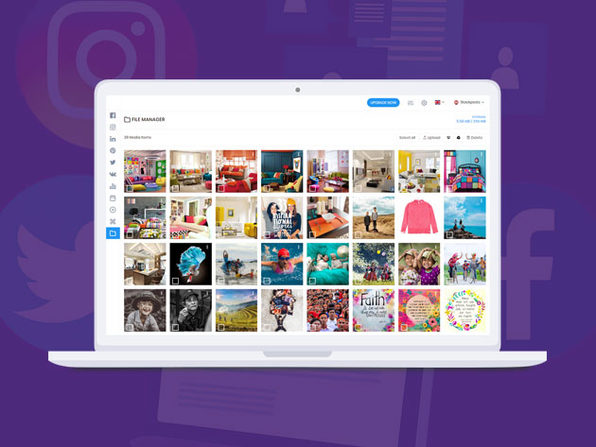
The headlines and details concerning the Trump administration's blacklisting of Huawei have come in fast and furious over the past week. Here's a breakdown of how the story has unfolded.
For a more detailed historical look at how Huawei has reached this point, check out our full summary here.
Wednesday, May 15:
The Trump administration adds Huawei to the U.S. Department of Commerce's Entity List via executive order, thereby blacklisting the company as far as U.S. corporations are concerned.
Sunday, May 19:
Google publicly states it will obey the administration's order: "We are complying with the order and reviewing the implications. For users of our services, Google Play and the security protections from Google Play Protect will continue to function on existing Huawei devices. Huawei will only be able to use the public version of Android and will not be able to get access to proprietary apps and services from Google."
Monday, May 20:
Intel and Qualcomm join Google: Neither company issued a statement, but sources cited by Bloomberg said the companies would comply with the order.
Huawei issues first public response: "Huawei has made substantial contributions to the development and growth of Android around the world. As one of Android's key global partners, we have worked closely with their open-source platform to develop an ecosystem that has benefitted both users and the industry. [We] will continue to provide security updates and after-sales services to all existing Huawei and Honor smartphone and tablet products, covering those that have been sold and that are still in stock globally. We will continue to build a safe and sustainable software ecosystem, in order to provide the best experience for all users globally."
Huawei issues second public response: "Huawei has been building an alternative operating system just in case it is needed," said spokesperson Glenn Schloss to CNN. "We would like to be able to continue operating in the Microsoft and Google ecosystems."
Further reading: Huawei's response to Google ban raises more questions than answers
Chinese government issues statement: "China supports Chinese companies defending their legitimate rights according to laws," said Lu Kang, a spokesperson for China's Ministry of Foreign Affairs, to CNN. "In terms of what measures either Chinese companies or Chinese government would take, please wait and see."
Huawei says plan B in the works: The company has an option to move forward without Google, according to several spokespersons. "We have been making a plan for this possible outcome," said Huawei's Jeremy Thompson, executive vice president in the U.K, speaking to the BBC. "We have a parallel program in place to develop an alternative. We would rather work with Android but if it doesn't happen in the future we have an alternative in place which we think will delight our customers."
U.S. signs 90-day reprieve: On May 20, the Trump administration's Commerce Department issued a temporary license that will allow Huawei to maintain its current products (for existing customers). The license expires August 19, which will essentially bring the full weight of the ban to bear.

Tuesday, May 21:
Huawei founder gets testy: Huawei founder Ren Zhengfei has strong words for Trump's ban, according to Global Times. "The company is able to continue providing products and services, and the U.S. sanctions will not hurt our core business. In such a critical moment, I'm grateful to U.S. companies, as they've contributed a lot to Huawei's development and showed their conscientiousness on the matter. As far as I know, U.S. companies have been making efforts to persuade the U.S. government to let them cooperate with Huawei."
Huawei says it is working with Google: "[Google has] zero motivation to block us. We are working closely with Google to find out how Huawei can handle the situation and the impact from the U.S. Department of Commerce decision," said Abraham Liu, a rep for Huawei in the E.U. Liu also likened the Trump administration's behavior to bullying. "This is not just an attack against Huawei. It is an attack on the liberal, rules-based order."
More plan B details emerge: While not sourced from Huawei, additional details concerning Plan B have leaked. Beijing-based Caijing says Huawei has an OS in the works that could replace the Android OS on its phones while still running Android apps.
Wednesday, May 22:
Arm suspends business dealings with Huawei: British chip designer Arm told its employees to halt conducting business with Huawei. "Arm is complying with all of the latest regulations set forth by the U.S. government," said Arm in a statement. Huawei later acknowledged the action. "We value our close relationships with our partners, but recognize the pressure some of them are under, as a result of politically motivated decisions. We are confident this regrettable situation can be resolved and our priority remains to continue to deliver world-class technology and products to our customers around the world."
Thursday, May 23:
TSMC says it can still do business with Huawei: A spokesperson for Taiwan's TSMC reportedly said its shipments to Huawei won't be affected by the current U.S. restrictions. The chip manufacturer is responsible for producing Huawei's Kirin smartphone chipsets, while processors from Apple, MediaTek, and Qualcomm are also churned out by the firm. The company's continued cooperation means Huawei won't need to search for another manufacturer to produce its Kirin processors.
Trump open to dealing with "very dangerous" Huawei: President Trump has called Huawei "very dangerous," but said the U.S. is open to including the company as part of a future trade agreement between the U.S. and China.
Trump was quoted as saying: "If we made a deal, I could imagine Huawei being possibly included in some form or some part of it." This could be a good development for Huawei, though Trump also reaffirmed suspicions about the threat Huawei potentially poses to the U.S. "You look at what [Huawei has] done from a security standpoint, a military standpoint. Very dangerous," Trump said.
Friday, May 24:
Huawei barred from SD card organization: As first spotted by SumahoInfo, the SD Association currently has Huawei de-listed on its website. In a statement sent to Android Authority, the SD Association confirmed that it is complying with the U.S. government order and barring Huawei from the association. This will not affect current Huawei smartphones, but could cause major issues for future devices.
Huawei pushed out of Wi-Fi Alliance: Similarly to the barring of Huawei from the SD Association above, the Wi-Fi Alliance also temporarily revoked Huawei's membership to its own organization. The Alliance had this to say in a statement to Android Authority: "Wi-Fi Alliance is fully complying with the recent U.S. Department of Commerce order without revoking Huawei Technologies membership. Wi-Fi Alliance has temporarily restricted Huawei Technologies participation in Wi-Fi Alliance activities covered by the order."
Monday, May 27:
Huawei claims it wouldn't support bans of American companies: Huawei founder Ren Zhengfei told Bloomberg that he would protest a Chinese ban against Apple, calling the Cupertino company his "teacher." In regards to a Chinese ban on American companies, he said, "That will not happen, first of all. And second of all, if that happens, I'll be the first to protest. Apple is my teacher, it's in the lead. As a student, why go against my teacher? Never." So it seems that Apple, at least, is safe.
Tuesday, May 28:
Huawei sues, says the ban is unconstitutional: Huawei filed a legal motion claiming the ban on the company working with other U.S.-based companies violates the U.S. Constitution. In its argument, Huawei says that the ban violates a constitutional law stating that Congress cannot make laws against specific individuals. Huawei feels this ban violates that clause.
TSMC will continue to work with Huawei: Taiwan Semiconductor Manufacturing Company (TSMC) will continue to make chips for Huawei, the company confirmed. This goes in opposition to other global manufacturers complying with the U.S. ban (TSMC is not obliged to commit to the ban). Although TSMC will continue its relationship with Huawei until at least the end of the year, the other bans might still have a negative effect on TSMC's business.
Huawei's replacement OS will not arrive in June: A rumor started to spread online that Huawei OS — the replacement for Android on future Huawei smartphones — will land in June 2019. The source of this rumor was actually a Huawei employee. However, Huawei quickly shot down the rumor as just that, stating that any announcements regarding Huawei's Android replacement will come through proper channels.
Wednesday, May 29:
Huawei rejoins three consortiums: Only a few days after getting pushed out of three consortiums, Huawei is now suddenly a member of all of them again. Huawei was relisted as a member in the Wi-Fi Alliance, the SD Association, and JEDEC. This is some much-needed good news for the company, although it's not quite clear what this means for the ban overall.
Science publishing group IEEE boots Huawei employees as reviewers: The Institute of Electrical and Electronics Engineers (or IEEE) is in charge of publishing scientific journals. However, due to the Huawei ban, the U.S.-based organization can no longer allow Huawei employees to peer review those journals. This information leaked via an economics professor on Twitter.
Friday, May 31:
China threatens to create its own 'Entity List' to include American firms: According to a spokesman for China's commerce industry, China will create an Entity List of its own. Even though the spokesman didn't call out the U.S. or U.S.-based companies, the implication is that China's Entity List will include U.S.-based companies.
Huawei employees ordered not to attend U.S. meetings: According to the Financial Times, Huawei ordered employees to cancel technical meetings with American contacts. Huawei also reportedly sent back American citizens who worked in research and development roles.
What will happen with Huawei next?
Stay locked to Android Authority to find out.
from Android Authority http://bit.ly/2HvEOit
via
IFTTT


































